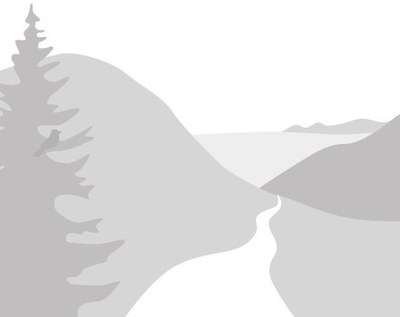
Trip Report
Mount Ellinor (winter)
- Mon, Feb 1, 2016
- Scrambling
Sunday January 31th, 2016
Originally posted as an official trip, but due to participant cancellation, turned into a private trip (of 2).
Access:
Big Creek Campground parking area:
It seems someone --hopefully the Forest Service-- has removed the “No Parking” signs. There's still the pull off area across the street from the trailhead, that can accommodate 2 vehicles.
Road to lower trailhead is still snowed in. With AWD/4WD, can easily make it to Skinwood creek pull off. Making it to the Lower trailhead will likely require AWD/4WD, 2WD will likely require chains.
The upper trailhead parking lot did look like someone made it up there, but I would not recommend trying to make it that far, even with AWD/4WD + chains –unless you're looking for a challenge and have required equipment getting a vehicle unstuck.
Trail Conditions:
Big Creek trailhead to Ellinor lower trailhead junction with connector trail is free of snow.
Snowshoes desirable/necessary at the lower trail junction with the upper spur trail back to the parking lot –this is just below the upper-lower junction. Snow level is about 3800 feet.
The trail is groomed with snowshoe track all the way to the base of the chute (winter route).
Winter Route (chute):
Chute has evidence of loose wet avalanche and some rather large rollers. Midway up the chute there was a roller the size of a VW bug. No signs of recent activity.
Due to wind loading in parts of the chute, snow was very inconsistent, with some sections being more hard pack to very deep powder snow, especially on the west side. Recommend sticking to the east side for the ascent, and west side for the descent. We were able to travel with snowshoes for most of the chute. The last 150 meters we had to transition to crampons as the slope angle got steeper 55-70 degrees. That last 150 m section before the base of the bowl was wind scoured and iced over, really requiring ice climbing crampons. Climbing partner had regular non-ice climbing crampons so we hugged the east side of the chute close the wall where we followed a snow spine. Had a 10 meter section of ice wall at ~60 slope that we traversed to make the last pitch to the base of the bowl.
This is all to say that current conditions require the ability to ice climb and have proper gear.
More or less the snow in the chute is consolidated enough to make for favorable travel.
We did not summit since climbing partner didn't have right gear. Once we reached the bowl and saw that there would be another ~1 km slope to climb to reach the summit, we decided not to even attempt since conditions were going to be just the same –icy slope.
Avalanche Conditions:
Snow Pit (east side of chute near the base)
Elevation: 1,402 meters | 4600 feet
Slope angle: 40
Aspect: south south-east (165)
1. Shovel Sheer test --no results
2. CTx --no results. Slight insignificant fracture at 6 cm which is the new snow.
3. ECTx --no results, but decided to continue to see if we could get propagation, which we did at ECTP 32. Failure was at 70 cm which is where the freeze had stopped or not reached, and the layer below that is very wet somewhat slushy snow. Fracture was very course –non-sheer plane-- indicating good bonding within the two layers. With continued freezing temperatures, I would anticipate the snow layer continuing to become stable.
Determined that there was little chance of avalanche and propagation, since it would require significant force to release. Still, we were well aware of the wind loading on lee slopes. Best I could determine the prevailing wind was from the East (~100 degrees).
No red flags the whole day. It was obvious to stay out of the bowl on the North & East side due to severe wind loading.
Hazards:
-Loose wet avalanche in the bowl: witnessed rollers and pinwheels.
-Very hard pack to icy steep slopes 55-75 degrees caused by wind scouring.
Travel Metrics: http://www.movescount.com/moves/move91800059
Picture: https://goo.gl/photos/qJg6rQ59eMXdHd926
(Remaining ~1 km slope that most likely is wind scoured making it an icy slope)
 David Geeraerts
David Geeraerts